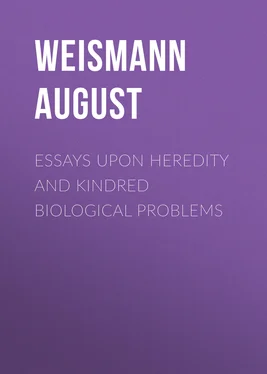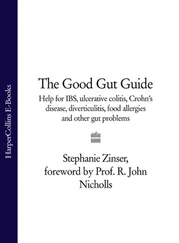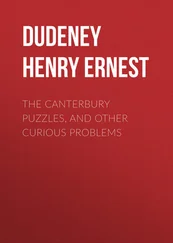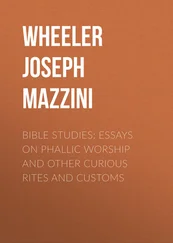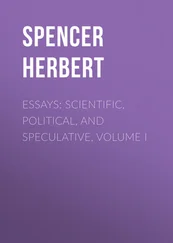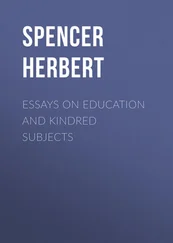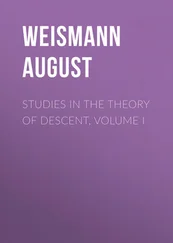August Weismann - Essays Upon Heredity and Kindred Biological Problems
Здесь есть возможность читать онлайн «August Weismann - Essays Upon Heredity and Kindred Biological Problems» — ознакомительный отрывок электронной книги совершенно бесплатно, а после прочтения отрывка купить полную версию. В некоторых случаях можно слушать аудио, скачать через торрент в формате fb2 и присутствует краткое содержание. Жанр: foreign_antique, Биология, на английском языке. Описание произведения, (предисловие) а так же отзывы посетителей доступны на портале библиотеки ЛибКат.
- Название:Essays Upon Heredity and Kindred Biological Problems
- Автор:
- Жанр:
- Год:неизвестен
- ISBN:нет данных
- Рейтинг книги:5 / 5. Голосов: 1
-
Избранное:Добавить в избранное
- Отзывы:
-
Ваша оценка:
- 100
- 1
- 2
- 3
- 4
- 5
Essays Upon Heredity and Kindred Biological Problems: краткое содержание, описание и аннотация
Предлагаем к чтению аннотацию, описание, краткое содержание или предисловие (зависит от того, что написал сам автор книги «Essays Upon Heredity and Kindred Biological Problems»). Если вы не нашли необходимую информацию о книге — напишите в комментариях, мы постараемся отыскать её.
Essays Upon Heredity and Kindred Biological Problems — читать онлайн ознакомительный отрывок
Ниже представлен текст книги, разбитый по страницам. Система сохранения места последней прочитанной страницы, позволяет с удобством читать онлайн бесплатно книгу «Essays Upon Heredity and Kindred Biological Problems», без необходимости каждый раз заново искать на чём Вы остановились. Поставьте закладку, и сможете в любой момент перейти на страницу, на которой закончили чтение.
Интервал:
Закладка:
We cannot a priori dispute the possibility of the existence of tissues in which the cells are not worn out by the performance of function, but such an occurrence appears to be improbable when we recollect that the cells of all tissues owe their constitution to a very far-reaching process of division of labour, which leaves them comparatively one-sided, and involves the loss of many properties of the unicellular, self-sufficient organism. At any rate we only know of potential immortality in the cells which constitute independent unicellular organisms, and the nature of these is such that they are continually undergoing a complete process of reformation.
If we did not find any replacement of cells in the higher organism, we should be induced to look upon death itself as the direct result of the division of labour among the cells, and to conclude that the specific cells of tissues have lost, as a consequence of the one-sided development of their activities, the power of unending life, which belongs to all independent primitive cells. We should argue that they could only perform their functions for a certain time, and would then die, and with them the organism whose life is dependent upon their activity. The longer they are occupied with the performance of special functions, the less completely do they carry out the phenomena of life, and hence they lead to the appearance of retrogressive changes. But the replacement of cells is certain in many tissues (in glands, blood, etc.), so that we can never seek a satisfactory explanation in the train of reasoning indicated above, but we must assume the existence of limits to the replacement of cells. In my opinion, we can find an explanation of this in the general relations of the single individual to its species, and to the whole of the external conditions of life; and this is the explanation which I have suggested and have attempted to work out in the text.
Note 9. Death by Sudden Shock
The most remarkable example of this kind of death known to me, is that of the male bees. It has been long known that the drone perishes while pairing, and it was usually believed that the queen bites it to death. Later observations have however shown that this is not the case, but that the male suddenly dies during copulation, and that the queen afterwards bites through the male intromittent organ, in order to free herself from the dead body. In this case death is obviously due to sudden excitement, for when the latter is artificially induced, death immediately follows. Von Berlepsch made some very interesting observations on this point, ‘If one catches a drone by the wings, during the nuptial flight, and holds it free in the air without touching any other part, the penis is protruded and the animal instantly dies, becoming motionless as though killed by a shock. The same thing happens if one gently stimulates the dorsal surface of the drone on a similar occasion. The male is in such an excited and irritable condition that the slightest muscular movement or disturbance causes the penis to be protruded 27.’ In this case death is caused by the so-called nervous shock. The humble-bees are not similarly constituted, for the male does not die after fertilizing the female, ‘but withdraws its penis and flies away.’ But the death of male bees, during pairing, must not be regarded as normal death. Experiment has shown that these insects can live for more than four months 28. They do not, as a matter of fact, generally live so long; for—although the workers do not, as was formerly believed, kill them after the fertilization of the queen, by direct means—they prevent them from eating the honey and drive them from the hive, so that they die of hunger 29.
We must also look upon death which immediately, or very quickly, follows upon the deposition of eggs as death by sudden shock. The females of certain species of Psychidae , when they reproduce sexually, may remain alive for more than a week waiting for a male: after fertilization, however, they lay their eggs and die, while the parthenogenetic females of the same species lay their eggs and die immediately after leaving the cocoon; so that while the former live for many days, the latter do not last for more than twenty-four hours. ‘The parthenogenetic form of Solenobia triquetrella , soon after emergence, lays all her eggs together in the empty case, becomes much shrunken, and dies in a few hours.’ (Letter from Dr. Speyer, Rhoden.)
Note 10. Intermingling during the Fission of Unicellular Organisms 30
Fission is quite symmetrical in Amoebae , so that it is impossible to recognise mother and daughter in the two resulting organisms. But in Euglypha and allied forms the existence of a shell introduces a distinguishing mark by which it is possible to discriminate between the products of fission; so that the offspring can be differentiated from the parent. The parent organism, before division, builds the parts of the shell for the daughter form. These parts are arranged on the surface of that part of the protoplasm, external to the old shell, which will be subsequently separated as the daughter-cell. On this part the spicules are arranged and unite to form the new shell. The division of the nucleus takes place after that of the protoplasm, so that the daughter-cell is for some time without a nucleus. Although we can in this species recognise the daughter-cell for some time after separation from the parent by the greater transparency of its younger shell, it is nevertheless impossible to admit that the characteristics of the two animals are in any way different, for just before the separation of the two individuals a circulation of the protoplasm through both shells takes place after the manner described in the text, and there is therefore a complete intermingling of the substance of the two bodies.
The difference between the products is even greater after transverse fission of the Infusoria , for a new anus must be formed at the anterior part and a new mouth posteriorly. It is not known whether any circulation of the protoplasm takes place, as in Euglypha . But even if this does not occur, there is no reason for believing that the two products of division possess a different duration of life.
The process of fission in the Diatomaceae seems to me to be theoretically important, because here, as in the previously-mentioned Monothalamia ( Euglypha , etc.), the new silicious skeleton is built up within the primary organism, but not, as in Euglypha , for the new individual only, but for both parent and daughter-cell alike 31. If we compare the diatom shell to a box, then the two halves of the old shell would form two lids, one for each of the products of fission, while a new box is built up afresh for each of them. In this case there is an absolute equality between the products of fission, so far as the shell is concerned.
Note 11. Regeneration
A number of experiments have been recently undertaken, in connection with a prize thesis at Würzburg, in order to test the powers of regeneration possessed by various animals. In all essential respects the results confirm the statements of the older observers, such as Spallanzani. Carrière has also proved that snails can regenerate not only their horns and eyes, but also part of the head when it has been cut off, although he has shown that Spallanzani's old statement that they can regenerate the whole head, including the nervous system, is erroneous 32.
Note 12. The Duration of Life in Plants
The title of the work on this subject mentioned in the Text is ‘Die Lebensdauer und Vegetationsweise der Pflanzen, ihre Ursache und ihre Entwicklung,’ F. Hildebrand, Engler’s botanische Jahrbücher, Bd. II. 1. und 2. Heft, Leipzig, 1881.
Читать дальшеИнтервал:
Закладка:
Похожие книги на «Essays Upon Heredity and Kindred Biological Problems»
Представляем Вашему вниманию похожие книги на «Essays Upon Heredity and Kindred Biological Problems» списком для выбора. Мы отобрали схожую по названию и смыслу литературу в надежде предоставить читателям больше вариантов отыскать новые, интересные, ещё непрочитанные произведения.
Обсуждение, отзывы о книге «Essays Upon Heredity and Kindred Biological Problems» и просто собственные мнения читателей. Оставьте ваши комментарии, напишите, что Вы думаете о произведении, его смысле или главных героях. Укажите что конкретно понравилось, а что нет, и почему Вы так считаете.
